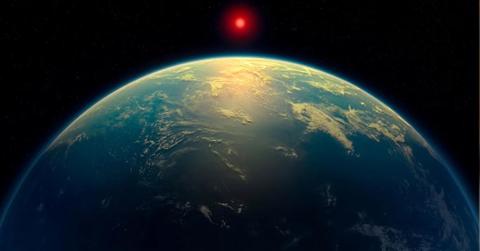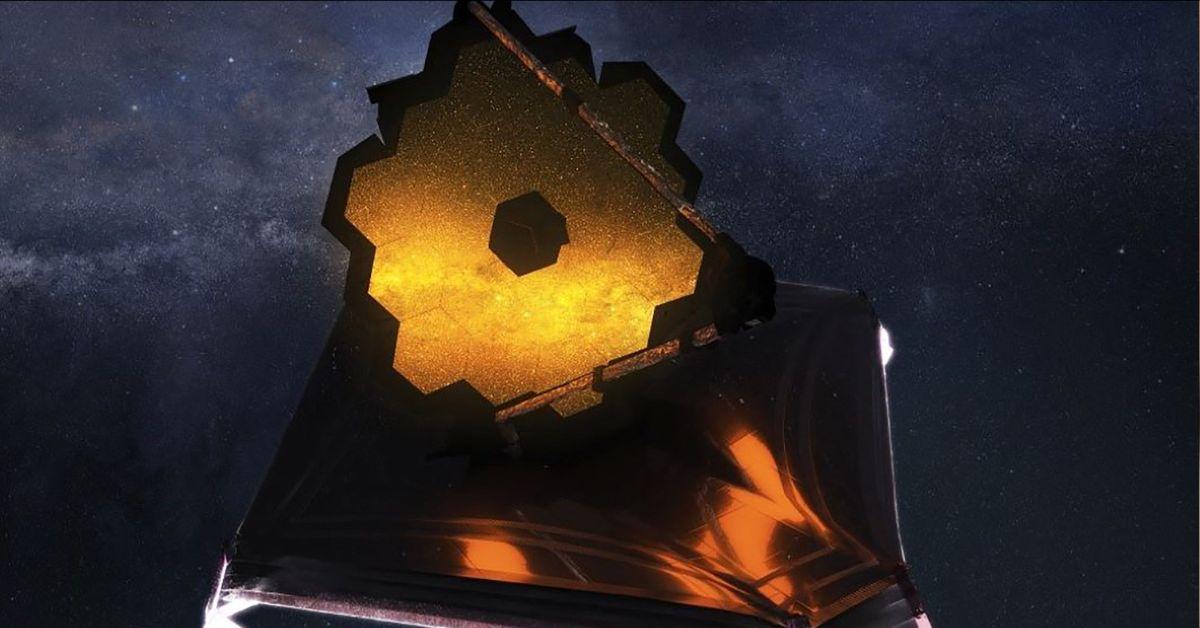'We May Not Be Alone': Astronomers' Startling Discovery From NASA's James Webb Space Telescope Finds Possible Alien Life on Planet

An artists rendition of how K2-18b could appear.
April 18 2025, Published 2:30 p.m. ET
Astronomers have discovered what they call the "strongest sign" yet of life in outer space, RadarOnline.com can reveal.
However, scientists warn the findings are still being investigated, and more work is needed to confirm their theory.

Cambridge astrophysicist Nikku Madhusudhan detailed the discovery
The research, led by scientists at the University of Cambridge, detected evidence of compounds on an exoplanet named K2-18b that can only be produced here on Earth by living organisms.
That exoplanet is 124 light-years away in the Leo constellation. It's described as much larger than Earth but smaller than Neptune and orbiting a red dwarf star in what is known as the "habitable zone" – considered the most promising location to find life-supporting planets.
Using the James Webb Space Telescope, scientists detected chemical fingerprints that suggest the presence of dimethyl sulfide, or DMS, and potentially dimethyl disulfide, or DMDS.
On Earth, both molecules are only produced by microbial life, typically marine phytoplankton. Scientists have long speculated that K2-18b could be an ocean world capable of hosting microbial life.
Cambridge astrophysicist Nikku Madhusudhan said in a statement: "It is the strongest sign to date of any possibility of biological activity outside the solar system."
He added: "Decades from now, we may look back at this point in time and recognize it was when the living universe came within reach.
"This could be the tipping point, where suddenly the fundamental question of whether we’re alone in the universe is one we’re capable of answering."
But Madhusudhan and his coauthors acknowledge that more data is needed before confirming life on another world. The team is optimistic another 24 hours of follow-up observations using the massive Webb telescope could make that possible.
He said: "It’s important that we’re deeply (skeptical) of our own results, because it’s only by testing and testing again that we will be able to reach the point where we’re confident in them. That’s how science has to work."

The discovery was made with the help of the Webb telescope.
Other astronomers are also cautiously optimistic.
David Clements, an astrophysicist at Imperial College London, said atmospheres on other planets are complex and difficult to understand, especially with the limited information available from a planet so far away.
"This is really interesting stuff, and while it does not yet represent a clear detection of dimethyl sulfide and dimethyl disulfide, it is a step in the right direction," he said in comments released by the Science Media Center in London.

Professor Madhusudhan added: "There is no mechanism in the literature that can explain what we are seeing without life.
"It's a question humanity has been asking for thousands of years. It's a shock to the system. It takes time to recover from the enormity of it."
Scientific Per Wimmer also talked up the discovery, adding: "Thanks to the miracle of the James Webb Telescope, an enormous 39-meter-diameter telescope launched in 2029, we're now able to see incredible details from the depths of space.
"Through this amazing instrument, we can detect slight changes in the light coming from a very, very distant planet.



